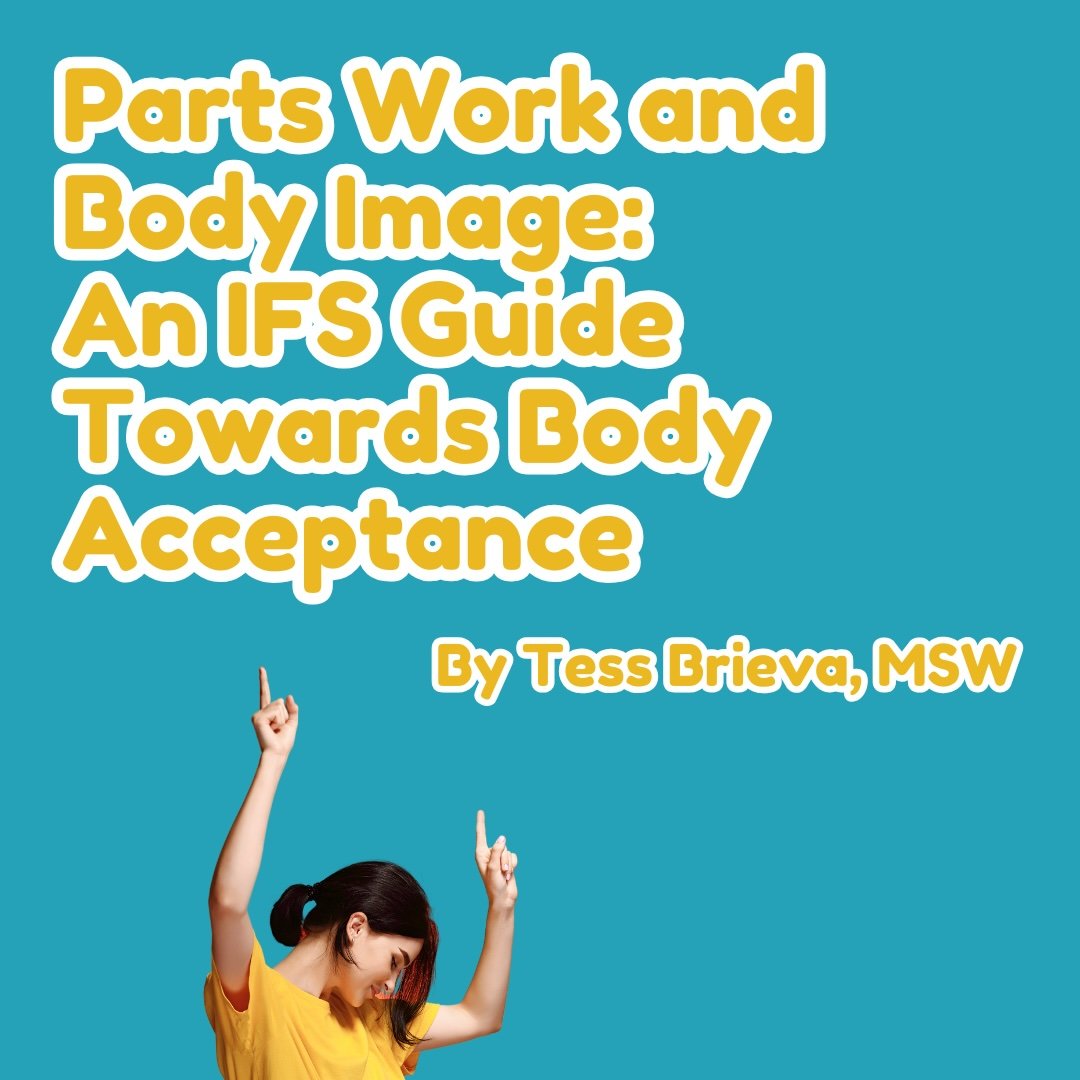The Perfect Storm: Unpacking the Link Between Gender and Eating Disorders
By Tess Brieva, MSW
Eating disorders are complex mental health conditions that transcend gender, affecting individuals of all identities. However, research consistently shows that eating disorders disproportionately impact girls and women. While societal narratives often attribute this disparity to simplistic explanations, the reality is far more nuanced. Social, cultural, psychological, and biological factors intersect to create a "perfect storm" that heightens the risk of eating disorders among women. By examining these layers, we can better understand why these conditions are so prevalent and what steps are needed to create more inclusive and effective approaches to treatment and prevention. This blog post is an introductory, brief exploration of how gender socialization relates to the prevalence of eating disorders.
A Note on Terminology
For the purposes of this blog, the terms "girls" and "women" are used, inclusive of trans and cis populations. Girls and women are the terms chosen rather than females or individuals assigned female at birth, because eating disorders specifically and more accurately vary by gender, not sex. This post will touch briefly on eating disorders among transgender populations to highlight the unique and overlapping challenges faced by trans and cisgender individuals.
Types of Eating Disorders
Eating disorders can be life-threatening and affect people of all genders, though prevalence and specific triggers often vary. There are many types of eating disorders, including:
Anorexia Nervosa: Characterized by severe restriction of food intake and fear of gaining weight.
Bulimia Nervosa: Marked by cycles of bingeing and compensatory behaviors such as purging.
Binge Eating Disorder: Involves recurring episodes of consuming large amounts of food without compensatory behaviors (e.g., purging).
Avoidant/Restrictive Food Intake Disorder (ARFID): An eating disorder characterized by extreme avoidance or restriction of certain foods, often due to sensory sensitivities, fear of adverse consequences like choking, or a lack of interest in eating, rather than concerns about weight or body image.
Other Specified Feeding or Eating Disorder (OSFED): A category for patterns that don’t fully align with specific diagnoses but still cause significant distress.
Related and Co-occurring Disorders
Other mental health disorders may connect to eating behaviors or may co-occur with eating disorders, but are distinct from eating disorders. These include:
Obsessive-Compulsive Disorder (OCD): Rigid rituals or obsessive thoughts about food, body weight, or appearance, contributing to restrictive eating patterns or compulsive behaviors.
Body Dysmorphia: Intense preoccupation with perceived flaws in appearance can drive disordered eating behaviors as individuals attempt to "correct" or mask their perceived imperfections.
Gender Dysphoria: For some transgender individuals, eating behaviors may be influenced by a desire to align their body with their gender identity, such as through weight changes or restricting food intake to suppress secondary sex characteristics.
Post-Traumatic Stress Disorder (PTSD): Can contribute to eating disorders as individuals may use food restriction, bingeing, or purging as a way to cope with trauma-related distress, numb emotional pain, or regain a sense of control over their bodies.
Depression and Anxiety: These conditions often co-occur with eating disorders, with individuals using food restriction, bingeing, or purging as coping mechanisms to manage overwhelming emotions or feelings of worthlessness. Sometimes an individual’s mental health can impair interoception, making it difficult to identify hunger or fullness cues.
Why Are Eating Disorders More Prevalent in Girls and Women?
Social and Cultural Pressures:
From a young age, girls are inundated with messages that equate their worth to their appearance. Societal expectations prioritize thinness and beauty for women, creating unattainable standards that fuel body dissatisfaction. These pressures are often reinforced by family, peers, and the media, shaping how girls and women perceive themselves and their bodies.Diet Culture and the Beauty Industry:
Diet culture perpetuates the harmful notion that thinner is always better, an ideal reinforced by the multibillion-dollar beauty industry. Women are frequently targeted with weight loss products, “clean eating” trends, and unattainable beauty ideals, fostering a cycle of insecurity and disordered eating behaviors.Biological Underpinnings:
Hormonal factors, such as those associated with puberty, menstruation, and reproductive cycles, can increase the risk of eating disorders among women. For example, changes in estrogen levels may heighten susceptibility to anxiety and perfectionism — common precursors to eating disorders. However, biology alone does not explain the gender disparity, as social and cultural influences often amplify these risks.Social Media:
Platforms like Instagram and TikTok exacerbate these pressures by promoting heavily edited images and unrealistic beauty standards. While these spaces can also provide community and support, they often act as echo chambers for diet culture, leading to comparison and negative self-esteem.
Eating Disorders Among Boys and Men
Although eating disorders are less common among boys and men, they remain a significant concern. Men may experience disordered eating as part of a desire for muscularity or leanness rather than thinness. Eating disorders among boys and men may include steroid use, excessive exercising, and restrictive diets. Societal stigma around male vulnerability can also delay diagnosis and treatment, making it critical to address gendered assumptions about who is "supposed" to have an eating disorder.
Eating Disorders in Trans and Queer Populations
LGBTQ+ individuals face unique risks for eating disorders. For instance, gay men have high rates of eating disorders and body dissatisfaction, due to a complex array of factors including cultural norms and minority stress. For some trans folks, disordered eating behaviors may be tied to body dysphoria or societal pressures to conform to binary beauty standards. Importantly, trans individuals often experience barriers to care, such as stigma or lack of provider knowledge, which compounds external stressors and may exacerbate eating disorder symptoms.
The Field’s Need for Intersectional Approaches
An intersectional lens is essential for addressing eating disorders. Factors such as race, disability, socioeconomic status, and sexual orientation significantly shape an individual’s experience with eating disorders. For example, Black women may face different beauty ideals than white women, yet they are less likely to be diagnosed or treated for eating disorders. Addressing these disparities requires research, outreach, and culturally competent care that accounts for the diverse lived experiences of those affected.
How We Can Reduce the Prevalence of Eating Disorders
Addressing the systems that perpetuate eating disorders requires collective action at individual, cultural, and systemic levels. Here are some starting points for fostering a healthier relationship with food and bodies for people of all genders:
Challenging Diet Culture:
We need to dismantle the harmful norms of diet culture by rejecting the glorification of thinness and promoting body diversity. This includes advocating for representation of all body types in media, supporting intuitive eating practices, and calling out harmful messaging from the beauty and wellness industries.Promoting Media Literacy:
Teaching critical thinking about social media and advertising can help individuals, particularly young people, recognize and resist unrealistic beauty standards. Encouraging creators and platforms to prioritize authenticity over perfection can also reduce the pressure to conform to unattainable ideals.Advocating for Gender-Inclusive Care:
Healthcare providers must be trained to recognize and treat eating disorders across all genders without bias. This includes improving access to care for men and transgender individuals and ensuring that treatment approaches are affirming, culturally competent, and intersectional.Supporting Mental Health Education:
Raising awareness about the connection between mental health and eating behaviors can reduce stigma and encourage people to seek help. Schools, workplaces, and community programs should emphasize the importance of mental health, body acceptance, and self-care.Policy and Advocacy:
Pushing for policies that regulate harmful advertising, restrict the promotion of diet products to minors, and support affordable access to mental health care can address systemic contributors to eating disorders.Empowering Individuals:
On an individual level, we can support one another by practicing body neutrality or positivity, fostering open conversations about struggles with food and self-image, and celebrating non-appearance-based achievements.
Conclusion
Eating disorders are not one-size-fits-all conditions, and their prevalence among girls and women is the result of a complex interplay of factors. By understanding the biological, social, and cultural dynamics that contribute to this disparity — and by adopting intersectional and inclusive approaches to care — we can take meaningful steps toward prevention and healing. Eating disorders may disproportionately affect certain populations, but they are everyone's concern, and dismantling the systems that perpetuate them benefits us all.
Want to work further on body acceptance? Check out our guide.
This 14 page workbook provides a compassionate approach to healing body image struggles using Internal Family Systems (IFS) therapy. Instead of focusing solely on behavior change, IFS helps you explore the deeper emotional dynamics behind negative body image with curiosity and self-compassion.
By recognizing that your mind consists of different "parts"—Managers, Firefighters, and Exiles—this workbook guides you to understand how these parts attempt to protect you from emotional pain. It introduces the concept of Self Energy, a healing force within you characterized by the 8 Cs: Compassion, Curiosity, Connectedness, Creativity, Calm, Confidence, Courage, and Clarity.
Through targeted exercises, you will identify how these parts operate in your own experience, build self-awareness, and develop a more accepting and loving relationship with your body. By the end, you’ll feel more patient, compassionate, and better equipped to embrace yourself as you are.



